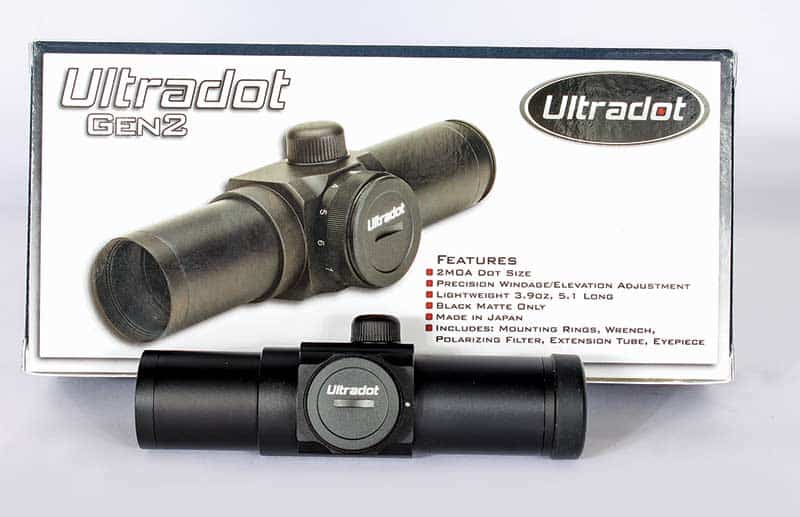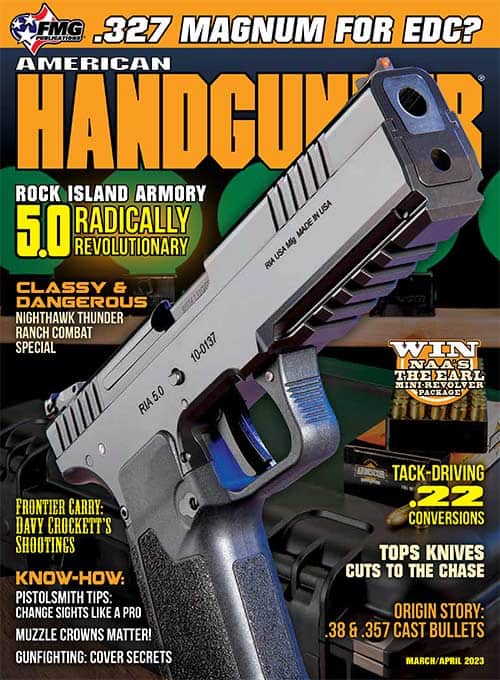Handgun Hunting Reflex or Tube?
The old adage, you can’t hit what you can’t see, is true. I guess a follow-up could be, the better you can see, the better you can hit. Often, I see handgun hunters who have acquired a new handgun asking others what optic would be best. While some prefer to hunt with irons, many seek some optic enhancement. There are many factors to consider before rushing out and purchasing an optic.
What gun and caliber are you shooting? At what distance do you anticipate shooting? What’s the longest possible shot? Are you hunting prairie dogs or big game such as wild boar, black bear, or whitetail deer? These and other factors weigh in on the final decision.
Scopes are an option, especially if you’re shooting prairie dogs at 200–300 yards. Some handgun hunters prefer scopes regardless of distance or game. However, many revolver and semi-auto shooters are leaning toward red dot sights. Most red dot sights for handguns do not offer any magnification but still provide desirable results for hunting purposes. This is especially true when shots are 100 yards or less. A lot of game is taken inside the confines of a football field.
Red dot sights come in basically two forms — reflex and tube type. I’m not advocating one is better than the other for hunting and every individual may have his personal preference. Reflex sights are smaller and take up less room on the gun than tube versions. Over the years, I’ve shot several brands of reflex sights, and today there are many options from various manufacturers.
Reflex Options
For example, the Leupold DeltaPoint Pro rides on top of my GLOCK 40 MOS. It’s a perfect fit for this 10mm Auto. The 2.5 MOA dot is also welcome. Burris makes several versions of their FastFire. The company’s FastFire 3 comes with a 3 or 8 MOA dot. Ultradot offers their reflex sight in the form of the L/T, with a 4 MOA dot. Trijicon is another premium option. The Trijicon RMR series is well-known in the hunting fraternity. Their RMR Type 2 LED model comes in 3.25 and 6.5 MOA. Trijicon provides many options in the RMR line-up. The SRO is another top-shelf reflex optic available in 1, 2.5, or 5 MOA. These are just a few examples of the many quality reflex sights on the market today.
Choosing the MOA size dot will vary among shooters. Competition shooters, who are racing the clock shooting at rather large steel targets, may prefer larger MOA dots. The larger dot allows the shooter to find the dot quicker and engage targets faster. These large MOA dots work well at close range.
On the other hand, hunters will probably benefit from something in the 2 to 4 MOA dot size. The smaller dot tends to be more precise if shots are extended. Keep in mind a 2 MOA dot will cover 2″ at 100 yards. I like the 2 MOA dot and can live with a tad larger.
Tubes
Tube-type red dot sights are another excellent option for hunters. For years I’ve been shooting Ultradots in several models they provide. I like their Matchdot II, which features four dot sizes: 2, 4, 6 and 8 MOA. Turn the dial and choose whatever you deem appropriate for the occasion. This model also comes with two different reticle patterns. You can accommodate most lighting conditions with 11 settings to adjust dot brightness.
I’m excited about their new Gen 2 30mm tube sight. This new version will offer a larger field of view with more light-gathering capability. It’s just a wee bit over 5″ long and weighs less than 5 oz. I’m pleased to see this optic with a 2 MOA dot, as I’ve found it ideal in most of my hunting pursuits. It’s available in either matte black or satin silver. An extension tube, polarizing filter, mounting rings and hex wrench are included in the box. The new Gen 2 also features 11 settings for adjusting dot intensity. This will be a most welcome revolver optic to the handgun hunting community.
I have plans for the new Gen 2 Ultradot. It will be fitted on a .460 S&W Mag. The combination will be ideal for big-game applications, and I have complete confidence the optic will hold up to copious amounts of recoil. After shooting Ultradots for many years, I know what to expect — an optic that will withstand brutal recoil.
Whether you prefer reflex or tube-style optics, there are many possibilities today. I lean toward tubes such as the Ultradot. A quality optic will enhance shot placement — and that, my friends, is essential.







